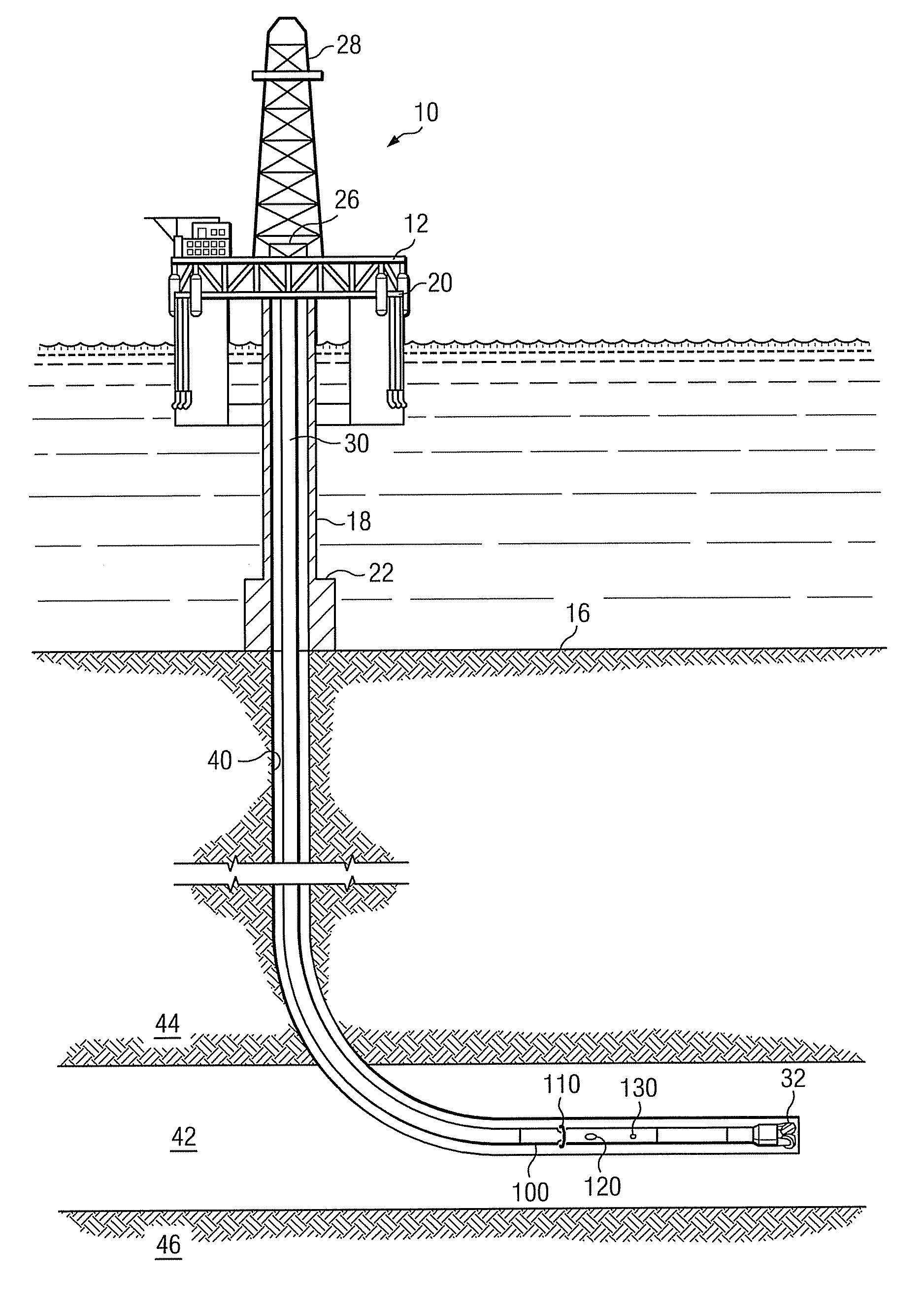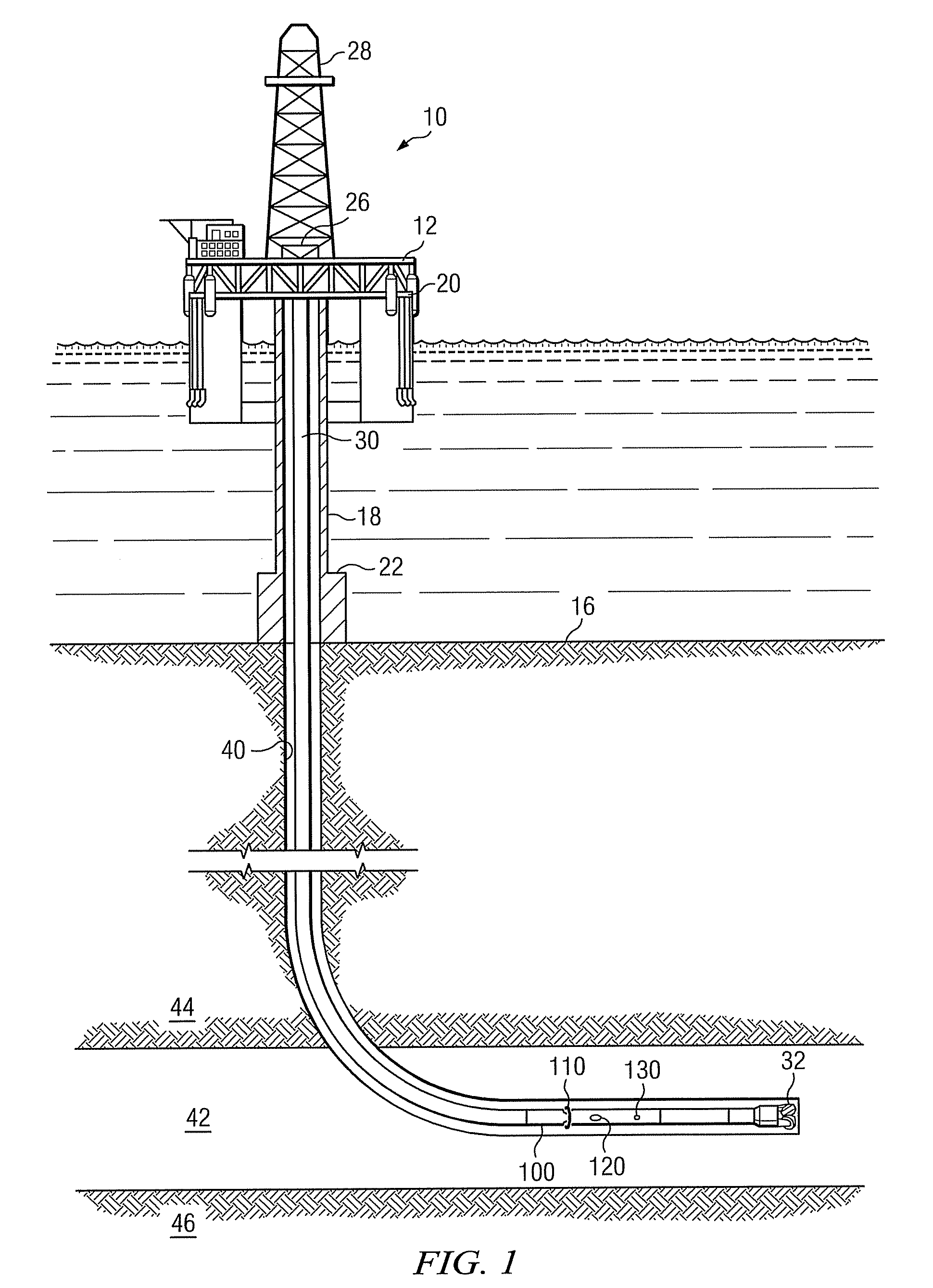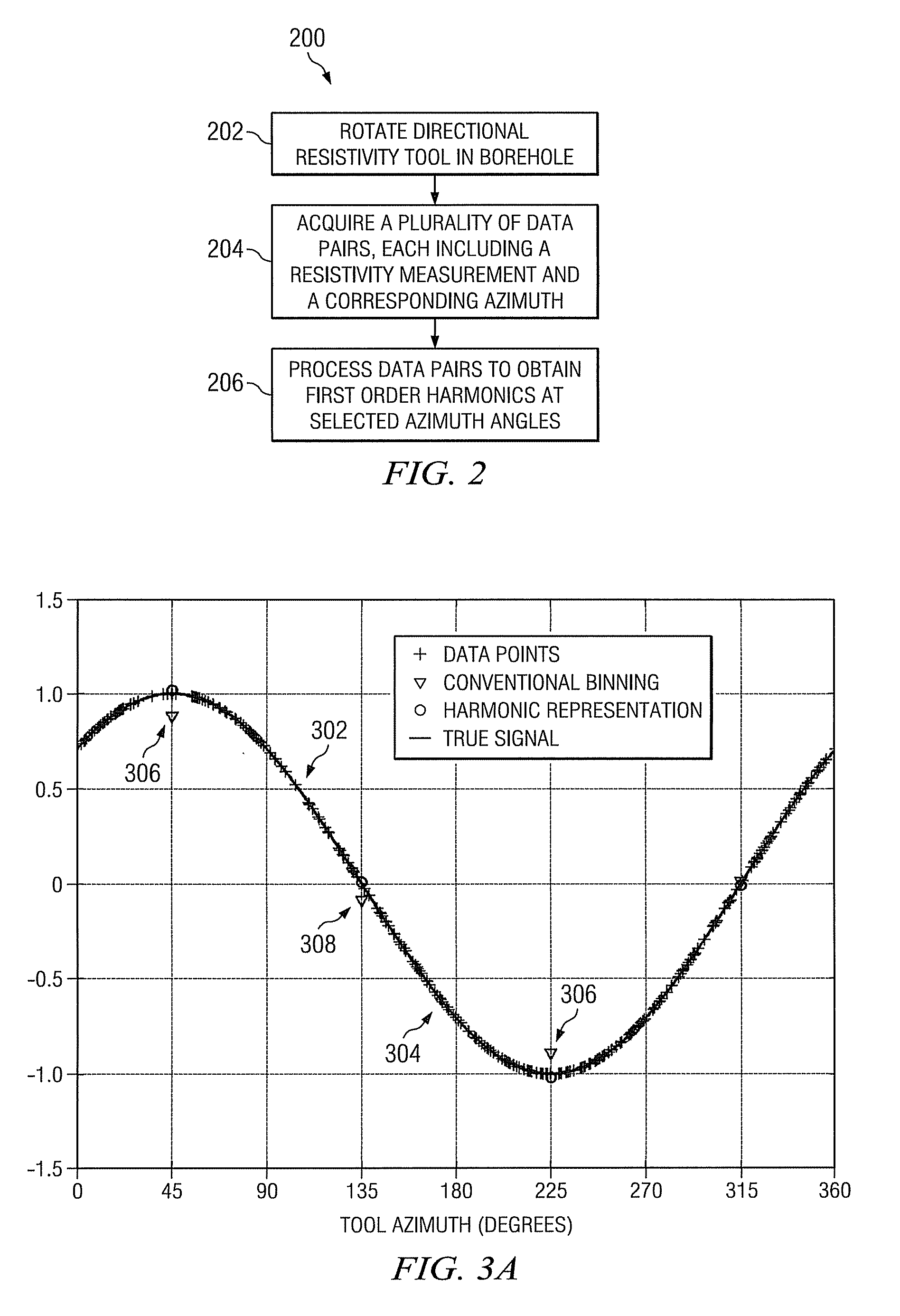Directional resistivity imaging using harmonic representations
a technology of directional resistivity and harmonic representation, which is applied in the field of forming directional resistivity images of subterranean boreholes, to achieve the effects of superior noise rejection, reduced signal noise, and misleading interpretation of respons
- Summary
- Abstract
- Description
- Claims
- Application Information
AI Technical Summary
Benefits of technology
Problems solved by technology
Method used
Image
Examples
Embodiment Construction
[0020]FIG. 1 schematically illustrates one exemplary embodiment of a logging while drilling directional resistivity tool 100 suitable for use with the present invention in an offshore oil or gas drilling assembly, generally denoted 10. In FIG. 1, a semisubmersible drilling platform 12 is positioned over an oil or gas formation (not shown) disposed below the sea floor 16. A subsea conduit 18 extends from deck 20 of platform 12 to a wellhead installation 22. The platform may include a derrick 26 and a hoisting apparatus 28 for raising and lowering the drill string 30, which, as shown, extends into borehole 40 and includes a drill bit 32 and LWD directional resistivity tool 100. Resistivity tool 100 typically includes at least one transmitting antenna 110 and at least one receiving antenna 120. The tool may further include an azimuth sensor 130 deployed thereon.
[0021]Azimuth sensor 130 (also referred to in the art as an orientation sensor) may include substantially any sensor that is s...
PUM
 Login to View More
Login to View More Abstract
Description
Claims
Application Information
 Login to View More
Login to View More - R&D
- Intellectual Property
- Life Sciences
- Materials
- Tech Scout
- Unparalleled Data Quality
- Higher Quality Content
- 60% Fewer Hallucinations
Browse by: Latest US Patents, China's latest patents, Technical Efficacy Thesaurus, Application Domain, Technology Topic, Popular Technical Reports.
© 2025 PatSnap. All rights reserved.Legal|Privacy policy|Modern Slavery Act Transparency Statement|Sitemap|About US| Contact US: help@patsnap.com



